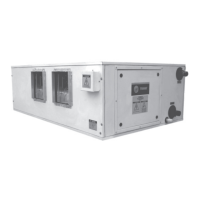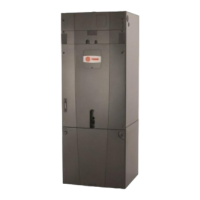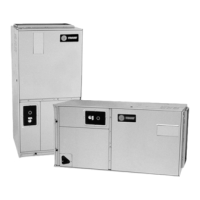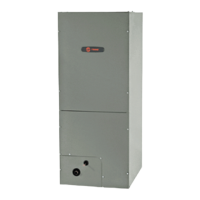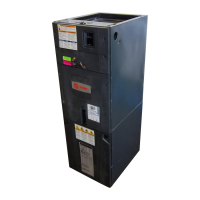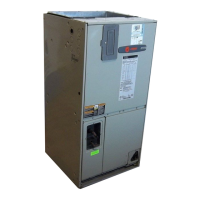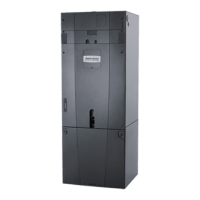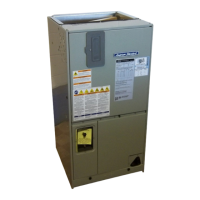34 LPC-SVX01C-EN
mechanical
requirements
Installation
Suction Line
Line sizing:
Properly sizing the suction line
is critical for ensuring that the oil returns
to the compressor throughout the system
operating envelope. If provided, use the
suction line size(s) recommended by the
manufacturer of the compressor unit. The
selected tube diameter(s) must maintain
adequate refrigerant velocities at all
operating conditions.
Routing:
To prevent residual or con-
densed refrigerant from “free-flowing”
toward the compressor, install the suction
line so it slopes slightly — 1 inch per 10
feet of run [1 cm per 3 m] — toward the
evaporator. Avoid putting refrigerant
lines underground. Refrigerant condensa-
tion, installation debris inside the line,
service access, and abrasion/corrosion
can quickly impair system reliability.
Insulation:
After operating the system
and testing all fittings and joints to verify
the system is leak-free, insulate the
suction lines to prevent heat gain and
unwanted condensation.
Components:
Installing the suction line
requires field installation of these
components: an access port and possibly
a suction filter. Position them as close to
the compressor as possible.
• Access port: The access port is used to
determine suction pressure and adjust
the TEV. It should be located near the
external equalizer line connection. This
port is usually a Schraeder valve with a
core.
• Suction filter: If required by the com-
pressor unit, a replaceable-core suction
filter is installed as close to the compres-
sor unit as possible. Adding manual, ball-
type shutoff valves upstream and
downstream of the filter simplifies
replacement of the filter core.
CAUTION
High Temperatures While Brazing!
Disassemble the thermal expansion
valve before completing the brazing
connections. If necessary, wrap the
valve in a cool wet cloth while brazing.
Failure to protect the valve from high
temperatures may result in damage
to internal components.
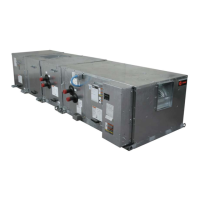
